How Can Animal Friends Drive SEO Growth in 2024? [Untapped Potential Issue #5]
June 12, 2024 • 15 min read

This deep dive is part of our Untapped Potential newsletter, where we reveal the SEO tactics we’d deploy to unleash the untapped potential of a different brand every week. Sign up to get more content just like this straight into your inbox every Wednesday.
Animal Friends is one of the UK’s leading pet insurance providers, with the site currently enjoying just over 140k estimated organic sessions every month.
But despite a relatively stable level of organic traffic over the past few years, there are lots of opportunities for the brand to drive growth on the SERPs.

You see, Animal Friends is driving more than two-thirds of its organic traffic from branded terms right now, with just under 100k sessions each month coming from those searching specifically for the brand on the SERPs.
And this leaves massive opportunities for the brand to drive growth through non-branded organic search.
Here’s how non-brand organic visibility has trended over the last few years:

Again, this has been relatively stable, with a few small ups and downs.
But what we can’t ignore is the fact that Animal Friends could be driving a lot more organic traffic from non-branded terms than they are right now.
And in this issue of Untapped Potential, I’m going to dive into exactly the steps I’d take to make this happen.
Animal Friends: A Quick Background

Here’s a quick background of the brand to give you the context you need to know:
- Animal Friends Insurance is a UK-based pet insurance provider.
- Founded in 1998, they offer comprehensive pet insurance policies for animals including dogs, cats, and horses.
- Animal Friends is multi-award winning, with the company recognised for affordable and reliable insurance services.
- A portion of Animal Friends’ profits supports animal welfare charities worldwide.
What’s certain is that the site should be driving way more non-brand organic traffic than it currently is.
Benchmarking Animal Friends’ SEO Performance
Here’s how the Animal Friends site currently performs on the UK SERPs:

An estimated 140,000 organic sessions each month certainly isn’t poor visibility. But when we consider that two-thirds of this is branded traffic, it showcases the scale of the opportunities a little bit more.
The site ranks in top 3 positions for 787 keywords at the moment, with a further 1,590 showing in positions 4 to 10. And it’s these ‘bottom of page one’ rankings where there are massive gains to be made.
You see, once a site is ranking in top 10 positions for a keyword, you can usually be pretty confident that it has the authority needed to perform in traffic-driving positions.
But how is the site ranking for a range of keywords at the moment?
| Keyword | Monthly Search Volume | Ranking Position |
|---|---|---|
| Pet Insurance | 90,500 | 27 |
| Can Dogs Eat Honey? | 3,600 | 1 |
| Bad Things About Cockapoos | 2,900 | 1 |
| Dog Insurance | 22,200 | 8 |
| Cat Insurance | 12,100 | 7 |
| How Much Is A Bengal Cat? | 320 | 2 |
| Pet Insurance for Dogs | 5,400 | 5 |
| Pet Insurance for Older Dogs | 2,400 | 6 |
| Pug Insurance | 170 | 3 |
| Horse Riding Insurance | 590 | 5 |
| Kitten Insurance | 1,300 | 3 |
| Pet Insurance for Senior Cats | 110 | 1 |
| French Bulldog Insurance | 880 | 4 |
| Puppy Insurance | 2,900 | 10 |
When we get granular, for example the keywords “pet insurance for senior cats” we see #1 rankings. And this is exactly the goal of pretty much any investment into SEO; for the site to rank in these traffic-driving positions.
But even combined, these two terms are searched just over 100 times each month.
And whilst they’re specific, therefore more likely to result in a conversion than something more generic, there needs to be a question asked around how non-brand traffic can be scaled.
And that, in this case, means ranking in traffic-driving positions for lots more of these specific but lower volume terms, and/or ranking higher for more generic, high-volume terms such as ‘pet insurance,’ where the site currently sits in position #27.
That said, ‘dog insurance’ ranks #8 and ‘cat insurance’ ranks #7. So one key question is how can these rankings be improved, given that in these ‘bottom of page one’ positions, they’re unlikely to be driving much in the way of significant traffic volumes.
Accelerating SEO Success: Animal Friends’ SEO Opportunities
I’ve spent time diving deep into Animal Friends’ current SEO performance, the competitive landscape and the opportunities that exist for the pet insurer to be able to present a roundup of tactics that they should be leveraging to drive further growth in 2024 and beyond.
These recommendations aren’t the only SEO opportunities that exist. These are a series of opportunities that I identified whilst analysing the site, all discovered without access to first-party data from Google Analytics or Google Search Console.
Grab a coffee, sit back and learn the tactics we’d deploy to take the SEO success of Animal Friends to the next level…
1. Improve the site’s architecture & URL structure
One of the first things that stood out to me when taking an initial look over the site was the URL structure for insurance types.
Let’s use ‘dog insurance’ as an example.
- https://www.animalfriends.co.uk/dog/dog-insurance/
- https://www.animalfriends.co.uk/dog/accident-only-dog-insurance/
- https://www.animalfriends.co.uk/dog/time-limited-dog-insurance/
- https://www.animalfriends.co.uk/dog/puppy-insurance/
- https://www.animalfriends.co.uk/dog/older-dog-insurance/
What I was instantly drawn to is the /dog/ folder in the URLs, and the fact that I couldn’t find this as a menu item. The top-level ‘Dog’ item links to https://www.animalfriends.co.uk/dog/dog-insurance/.
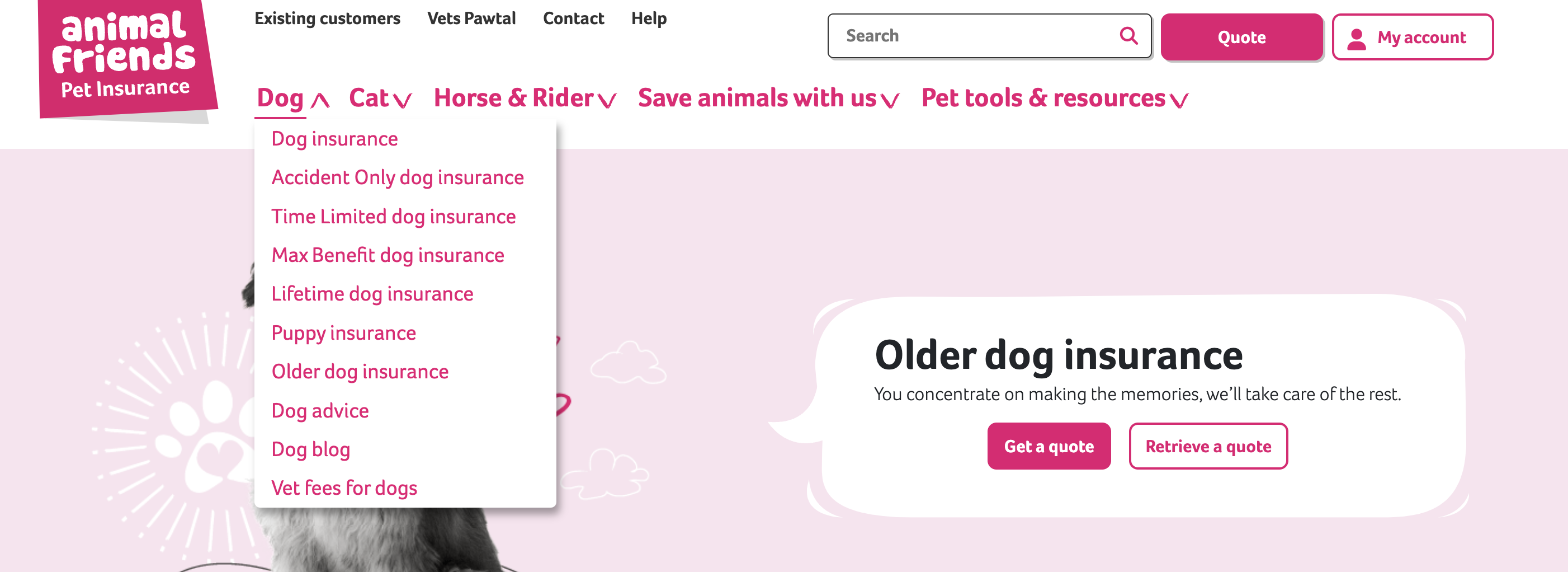
I’m questioning why there’s the need for the /dog/ folder to exist at all.
In fact, visiting it shows it redirecting to https://www.animalfriends.co.uk/dog/dog-insurance/ anyway.
If we look at competitor’s pages that rank for ‘dog insurance,’ we see:
- https://www.petsure.com/dog-insurance
- https://www.petplan.co.uk/pet-insurance/dog-insurance/
- https://www.comparethemarket.com/pet-insurance/dog-insurance/
- https://www.moneysupermarket.com/pet-insurance/dog-insurance/
To note, it makes total sense for Compare the Market and Money Supermarket to be using the /pet-insurance/ subfolder as they offer a far wider range of products (home insurance, car insurance etc). This is needed.
PetPlan, on the other hand, doesn’t, as far as I’m concerned.
But on the same note, Animal Friends doesn’t need this extra layer to the URLs.
Instead, I’d change these to:
- https://www.animalfriends.co.uk/dog-insurance/
- https://www.animalfriends.co.uk/dog-insuranc/accident-only/
- https://www.animalfriends.co.uk/dog-insurance/time-limited/
- https://www.animalfriends.co.uk/dog-insurance/puppy/
- https://www.animalfriends.co.uk/dog-insurance/older-dogs/
This would see all of the sub-pages housed within the /dog-insurance/ subfolder, which from the perspective of inheriting authority at the folder level, as well as displaying contextual signals, it makes total sense.
I’m a big fan of URL silos / topic clustering, and where possible prefer to do this with the site’s URL structure. The same approach should be rolled out to ‘cat insurance’ and ‘horse and rider,’ too.
2. Improve E-E-A-T signals
E-E-A-T is something that’s become even more important for YMYL brands (and being insurance, Animal Friends absolutely falls into this) over the last year, and is only going to continue to become more so.
And the site could be doing a lot more, in my opinion, to build and demonstrate this.
Here are just a few ways they should look to do this, based on my digging around the site:
- Add authors and short author bios to informational content. Especially when talking about finance and animal health, content shouldn’t be published without an author. People want to know the content they’re reading has been written by experts.
- Introduce standalone author pages to provide information about the experts behind the site’s informational content. These should contain information about the people, as well as be marked up using author Schema markup.
- Leverage the insights and expertise of experts within informational content. There are plenty of opportunities to work in quotes and comments into existing content, really adding that level of ‘authority’ and adding value to the content that’s already in place.
- Leverage digital PR as a way to not only earn editorial links but also as a way to build the authority of the site’s authors and experts. Expert insights PR, offering commentary and quotes to the press both proactively and reactively, is a great way to do this and something we don’t see much evidence of the brand using at the moment.
3. Expand the site’s “[breed] + insurance” pages in number and quality
Right now, I can find 16 “[breed] + insurance” pages indexed for Animal Friends.
That’s pages like “French Bulldog Insurance” and “Pug Insurance.”
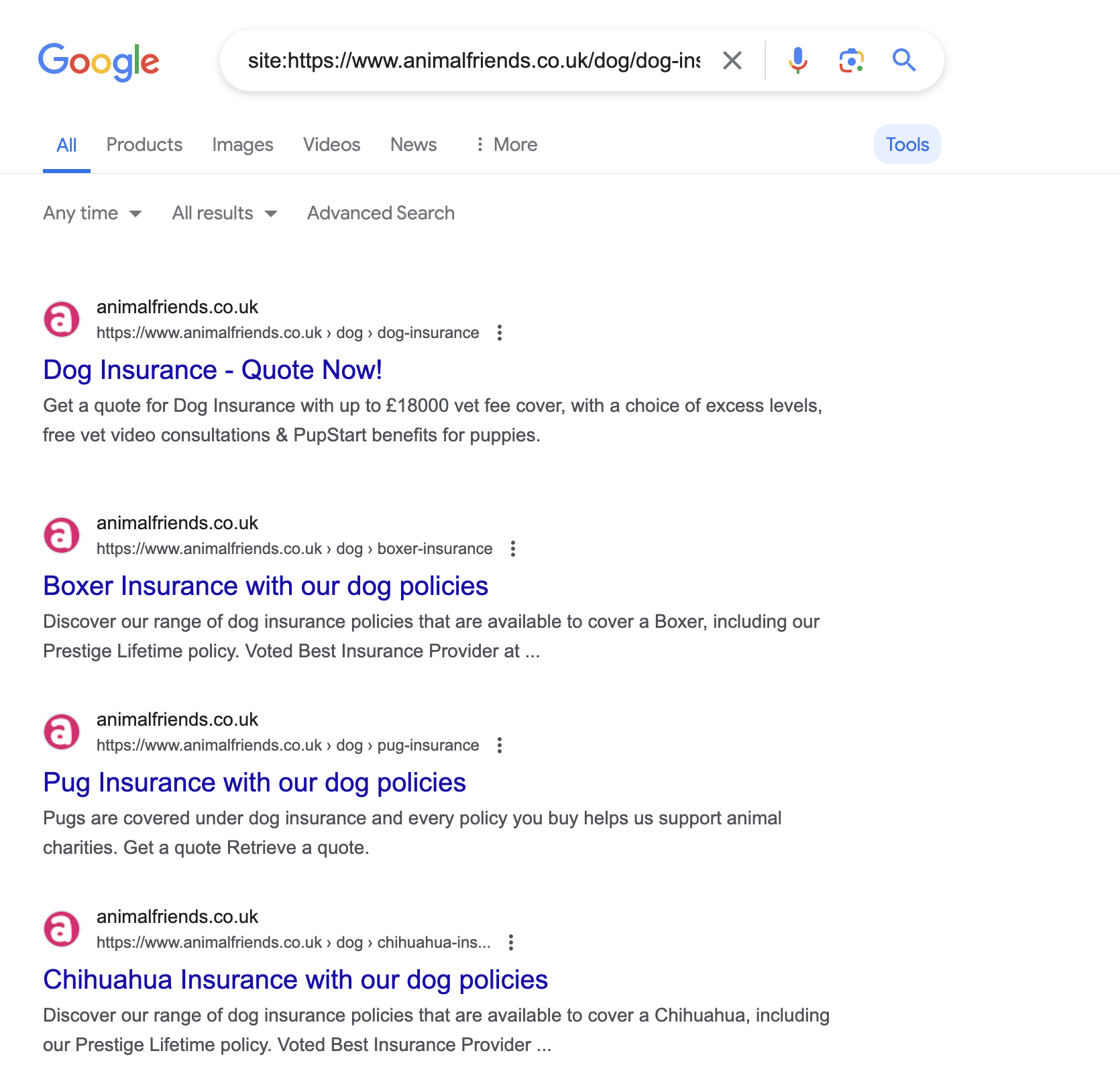
But there are many more dog breeds than this.
Sainsburys Bank, who perform well for these types of terms on the SERPs, has 36 breed insurance pages, in comparison.
There’s a need for Animal Friends to expand these pages to cover more breeds. But before doing that, I’d recommend looking closely at the content of these pages against those that rank higher and considering how they can be improved and how they can add more value.
And in order to figure this out, we need to put ourselves in the shoes of the user and consider, for a moment, what someone is looking for when they search a keyword like ‘Pug Insurance.’
Side by side, let’s compare Animal Friends’ ‘French Bulldog Insurance’ page against Sainsburys Bank’s:


One thing that stands out, when looking a Sainsburys Bank’s page (that ranks #1 for French Bulldog Insurance), is that it’s very much a hybrid between an ‘insurance’ page and a breed guide page.
Animal Friends USED TO have the page shown above, AND a separate ‘French Bulldog breed guide’ page. It’s internally linked to from within the copy:

But this now redirects to the French Bulldog insurance page. The one the link is on (which in itself makes no sense).
Looking back at an archive of this page on Archive.org, we see:
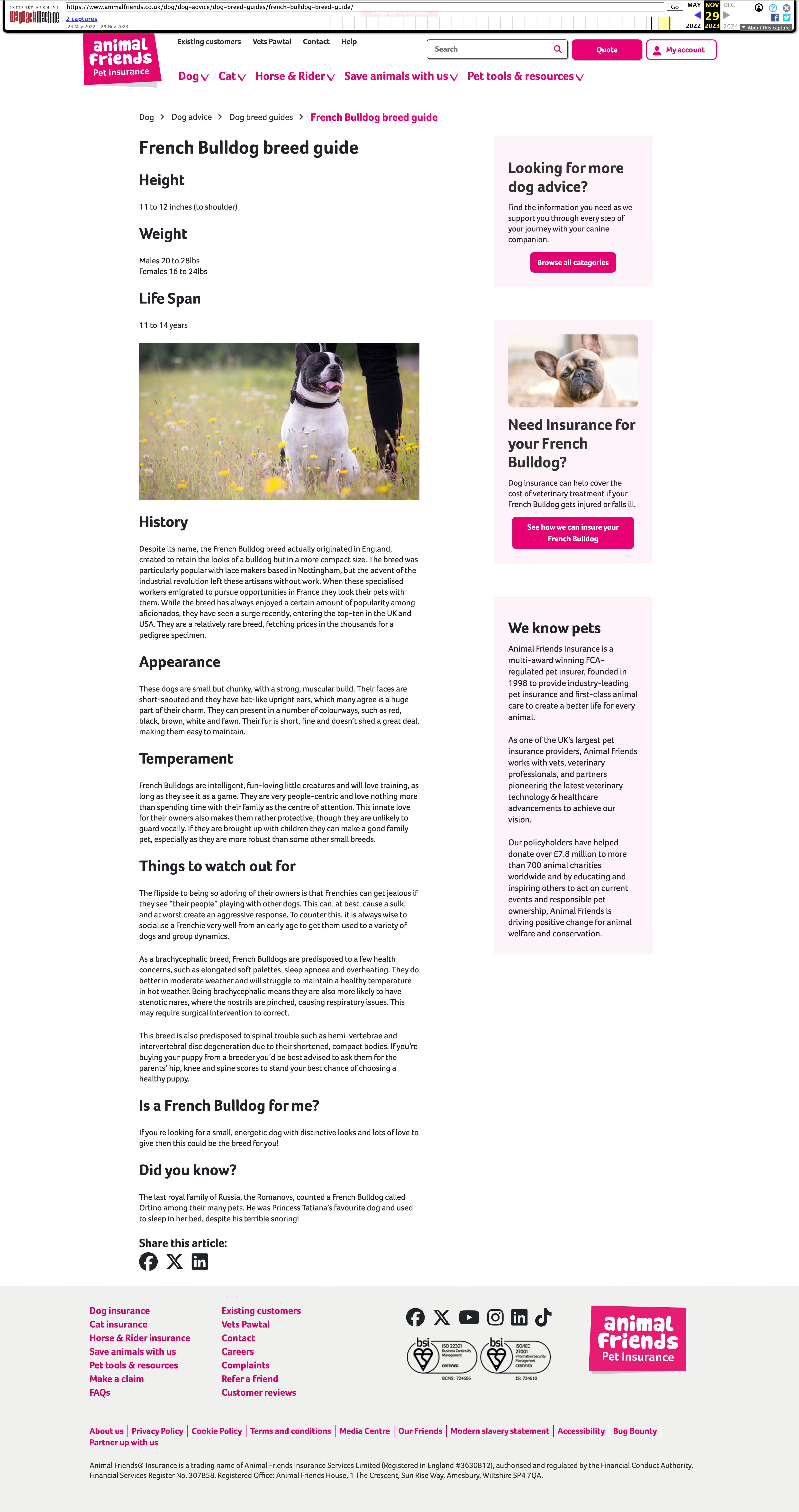
I can see why this was redirected to the main page; there’s a lot that could be expanded on here.
My recommendation here would be to carefully consider the information an owner would want to see on the ‘breed insurance’ pages and make improvements based on this.
I’m thinking things like:
- The average value of the breed
- Common health conditions and the costs of vet bills without insurance
- Average insurance costs for the breed
Things that add value to the page and help convince owners why they should be taking out insurance.
4. Overhaul the site’s internal linking strategy
Internal linking improvements are often one of the quickest wins that a site can implement, and I’m seeing plenty of opportunities for Animal Friends to double down on this.
Especially from within informational content.
Let’s look at their ‘Symptoms and actions of poisoning in pets’ guide as an example.
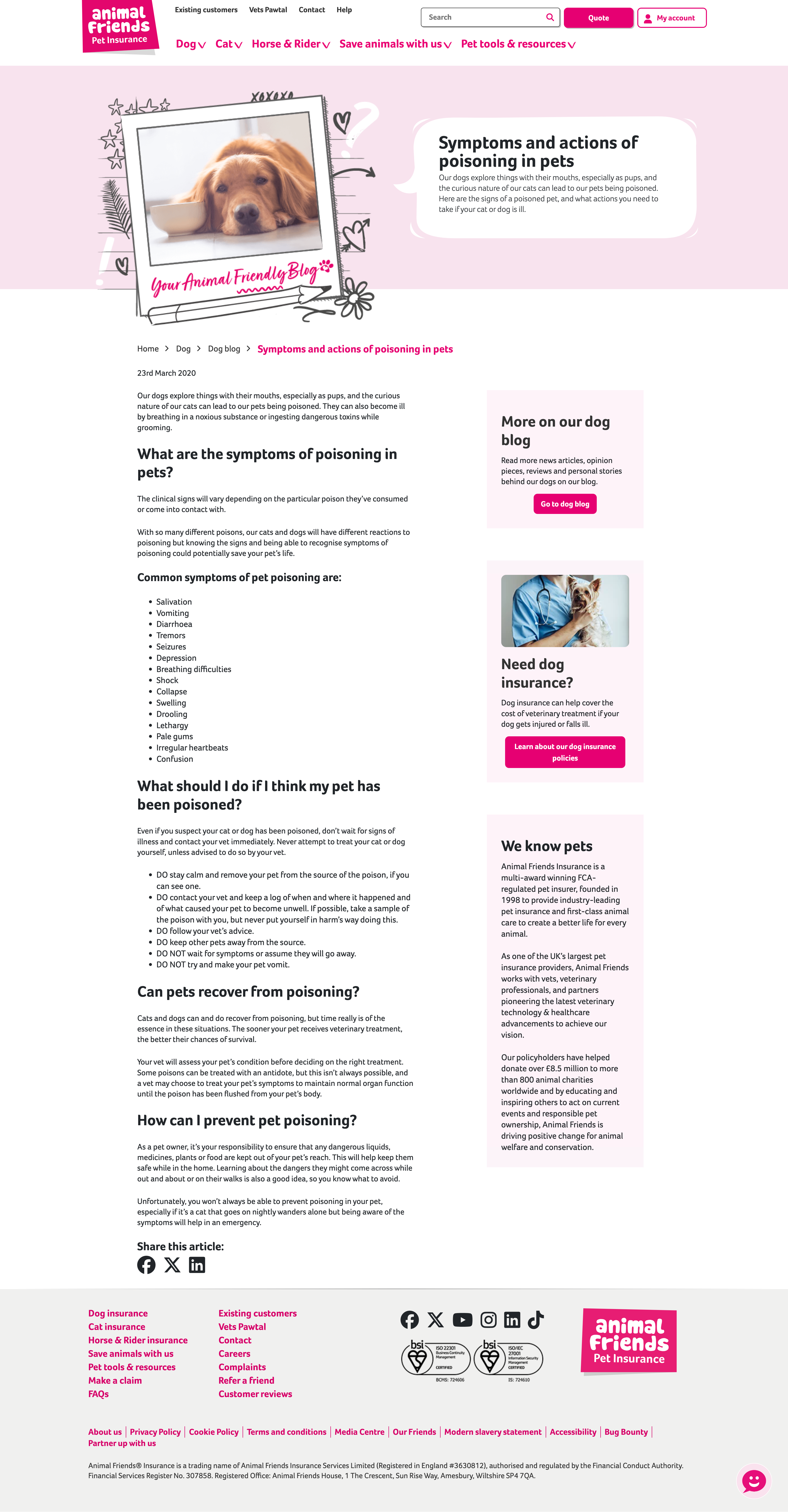
There are no internal links in this post, yet there should be in my opinion.
I’d look at adding a section to this that looks at the typical cost of vet bills for pet poisoning and reference (and link to) whether insurance will cover this.
And this is just one example. Lots of others exist across the site’s informational content.
5. Close the keyword gaps against Petplan & Many Pets
Petplan and Many Pets are two of Animal Friends’ main competitors, yet when I analyse the keyword gap between the sites using Semrush, we can see that there’s a huge opportunity to close the gaps that exist.

One of the main things we see here is that, for starters, the number of keywords that the Animal Friends site is ranking for is significantly less than both of these two competitors.
With very similar offerings, this warrants an investigation to understand just what these gaps are and to begin to put together a plan to close them.
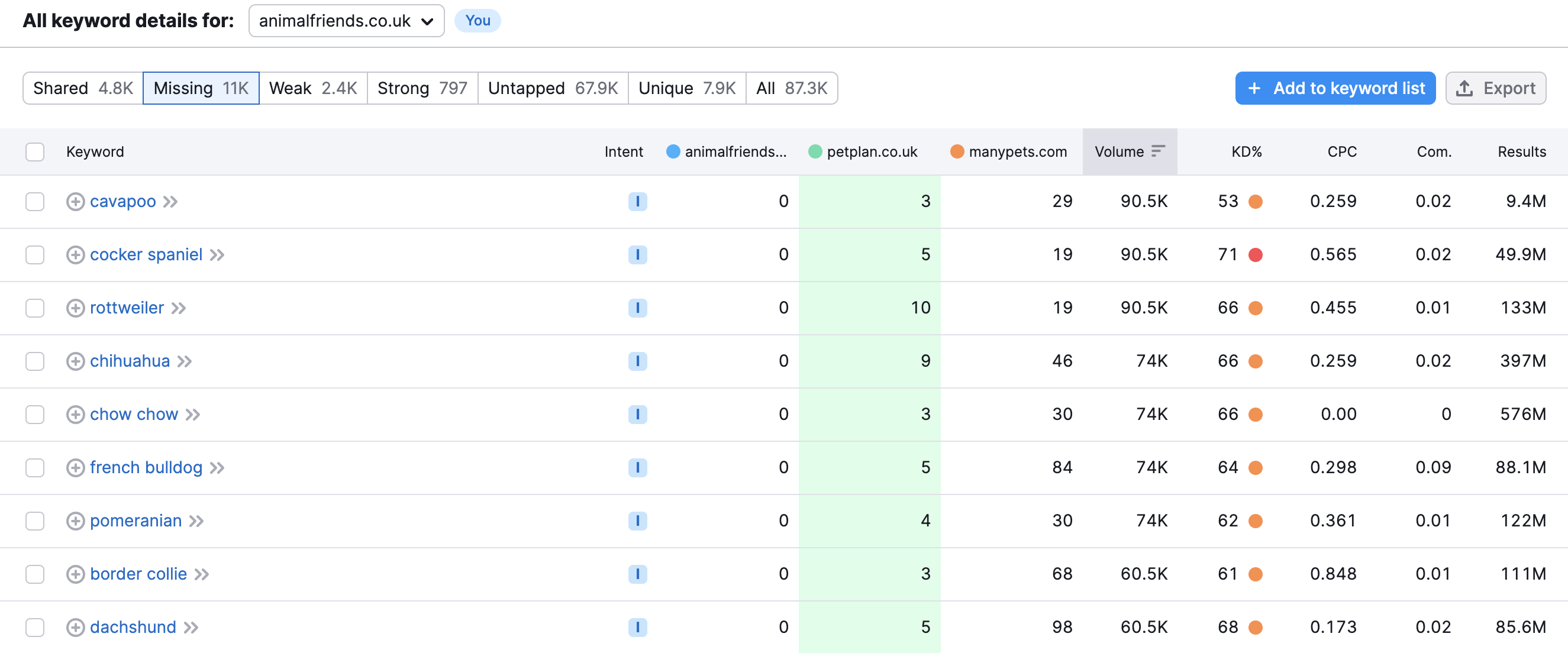
The first thing I notice is that PetPlan is ranking very, very well for ‘breed’ terms.
Given the fact that a lot of the searches for these terms will be people considering getting the breed, it makes total sense to introduce them to an insurer at this stage. It’s a fantastic way to drive awareness early on.
And whilst Many Pets don’t rank anywhere near as well as PetPlan, Animal Friends rank nowhere at all for a lot of these breed name terms.
To me, this means there needs to be a strategy put together that addresses this and maps out how they can rank for these terms, knowing a close competitor does.
There are a lot more opportunities that can be pulled from a keyword gap analysis, and the visibility that could be unlocked by tapping into these could be huge.
6. Merge the blog & advice sections into improved content hubs
At the moment, the Animal Friends site has, in my opinion, too many places where informational content exists. It’s hard to find.
We see:
I’d recommend merging these into a main ‘Pet Guides’ content hub, which is then categorised by animal and guide type.
It’s how PetPlan does it, and in my opinion, it’s the most effective way to set this up, as opposed to having multiple informational content sections.

Improving the structure of Animal Friends’ informational content and building this out into one well-categorised content hub would be expected to have a significant impact on building topical authority, improve the discoverability of content (it’s not just about SEO and rankings) and have a hub that makes a lot more sense.
It’s one to think on, making sure that redirects are properly implemented if and when these are merged into one hub.
7. Improve the site’s HTML sitemap
If you’ve been reading the Untapped Potential series from the start, you’ll know by now that I’m a big fan of sites having an HTML sitemap in place.
They’re an effective way to avoid orphan pages, as well as a way to ensure key pages don’t end up sitting too deep in a site’s structure. They’re not a replacement for internal linking, not at all. But they’re something every site should have.
And Animal Friends’ has an opportunity to better leverage this.
How?
By making sure that all of the site’s key pages and posts are referenced within it.
At the moment, the site’s HTML sitemap is pretty sparse:

You’ll notice, for starters, that the ‘[breed] + insurance’ pages I mentioned above aren’t included in the sitemap. Nor are the guides and articles across the site.
Unless it’s a large site (thousands of pages or more), I’d always recommend including all site pages in the HTML sitemap, as well as posts. If there are a lot of posts, these could be broken into their own HTML sitemap.
8. Build out content around key conditions, claims & costs
Put yourself in the shoes of a pet owner and consider the topics that are relevant to pet insurance.
In other words, aside from the obvious clean-cut insurance topics, what else would you expect a pet insurance company to be considered an authority in? Or what sort of topics would you consider as being relevant to a pet owner with a clear hook to insurance?
There’s a few that spring to mind, though:
- Pet health conditions
- Pet insurance claims & cover
- The cost of pets
Let’s break these down to look at how they’re relevant to Animal Friends:
| Topic | Relevancy |
|---|---|
| Pet health conditions | Health conditions are one of the main reasons for pet insurance claims. |
| Pet insurance claims & cover | This one’s obvious. But there are lots of people wondering what is and isn’t covered by pet insurance. |
| The cost of pets | Pets cost a lot of money both upfront and over their lifetime, and insurance is something that’s essential for any pet owner. But just how much do they cost? |
This is how you need to approach content strategy, starting by mapping out the topics people associate your brand with and that they’d consider you to be knowledgeable experts on.
And looking at these, there are some huge gaps in their content strategy that Animal Friends should look to close.
Here are 9 examples of informational content around these topics that are missing right now but that I’d recommend creating:
| Target Keyword | MSV |
|---|---|
| What does pet insurance cover? | 590 |
| Does pet insurance cover neutering? | 590 |
| Does pet insurance cover dental? | 260 |
| Dog has eaten chocolate | 1,000 |
| Can dogs eat grapes? | 9,900 |
| Can dogs eat peanuts? | 6,600 |
| Dog neutering cost | 1,900 |
| Dog cataract surgery cost | 390 |
| How much does a cockapoo cost? | 170 |
These are only a very small selection of informational queries that Animal Friends hasn’t created content for up to now, but in my opinion, should do.
An Opportunity to Accelerate SEO Success
Animal Friends has a massive opportunity to accelerate SEO success in 2024 and beyond.
Right now, a significant percentage of the site’s organic traffic is coming from branded queries, and there’s a huge opportunity to leverage this brand familiarity and brand presence to drive growth across non-branded organic performance.
Ranking for high-volume, high-intent non-brand queries could produce a major uplift in traffic and policy purchases, and this is all up for the taking.
It’s all about putting the right strategy in place. One that perfectly balances technical SEO, content and digital PR to accelerate visibility and leverage the untapped potential that the brand is sitting on.
With the right strategy in place and a focus on organic growth, 2024 and beyond could be a very exciting time for the brand…




